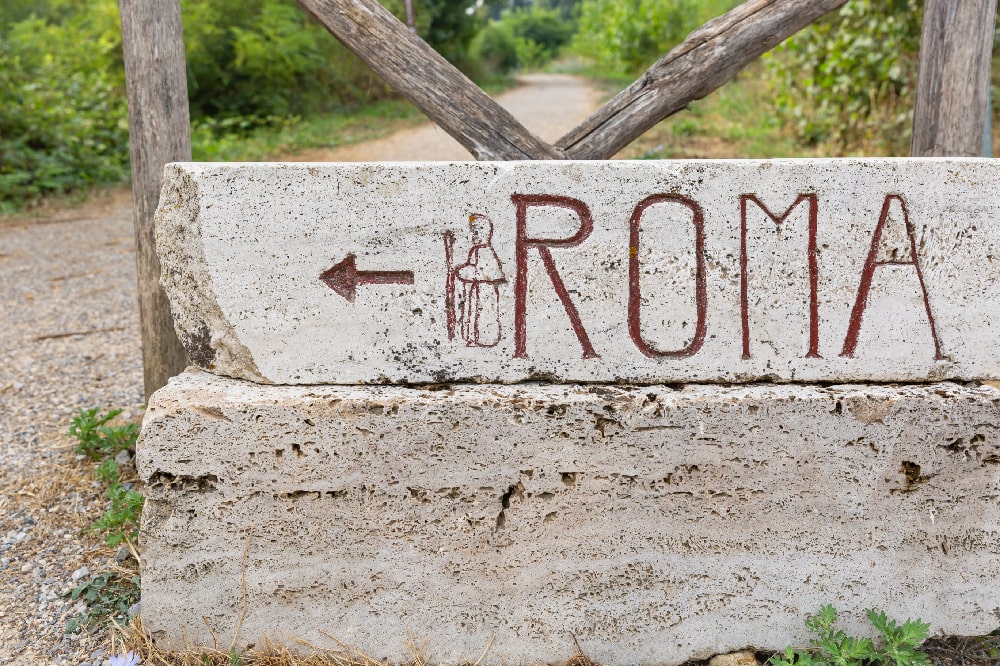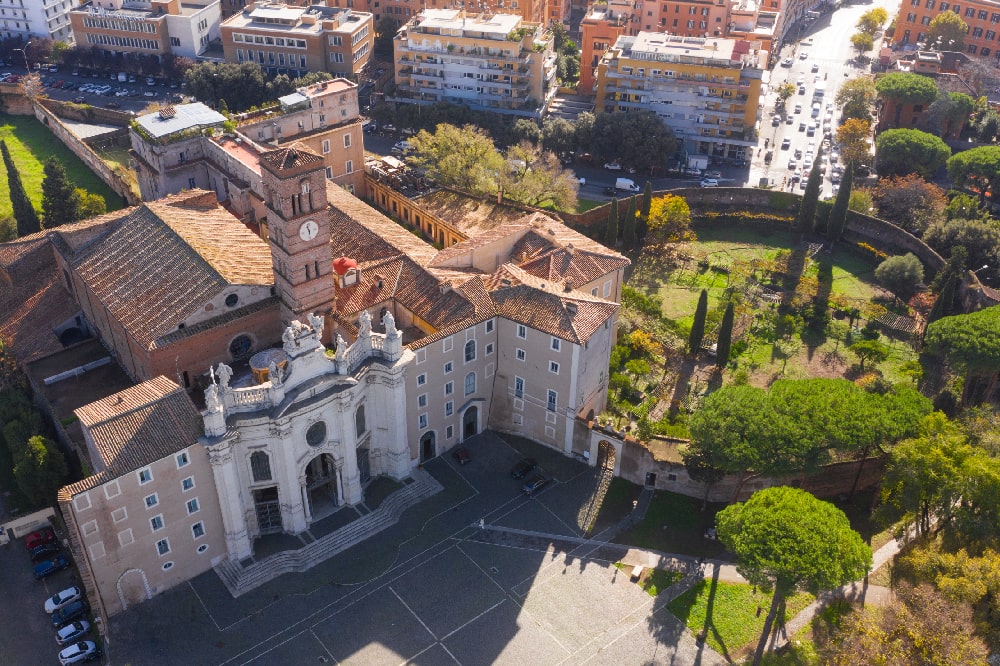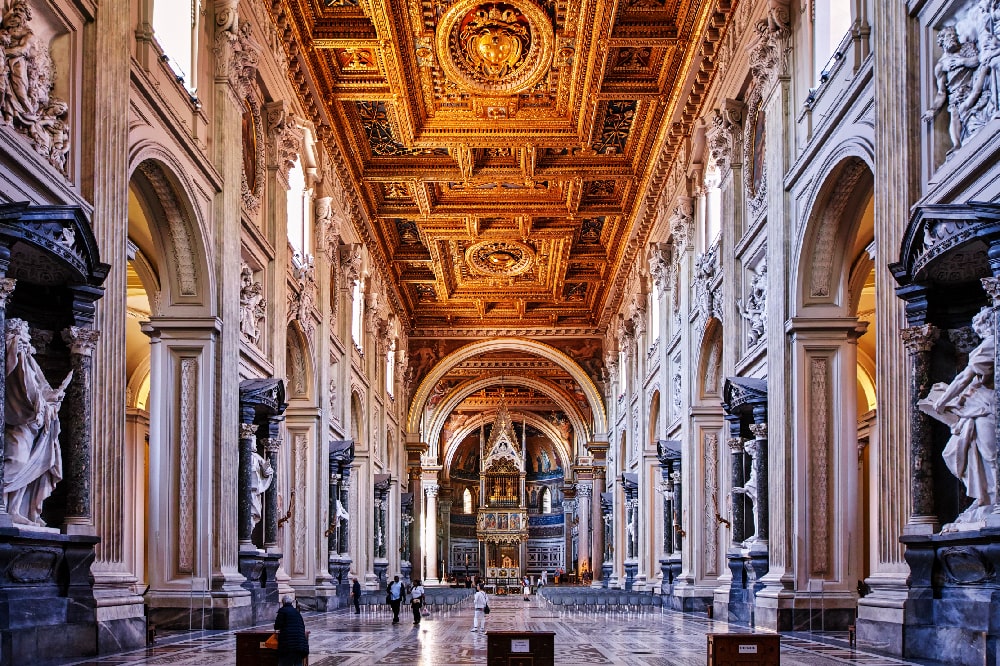By the Apparitions of Guadalupe, we refer to the four appearances of Our Lady to Juan Diego Cuauhtlatoatzin, an Aztec convert to Christianity. These apparitions took place within a few days of each other in December 1531, on Tepeyac hill, near Mexico City. The definition Apparitions of Guadalupe comes from the Monastery of Guadalupe, and perhaps also from the Aztec expression Coatlaxopeuh, which means “she who crushes the serpent” (see Genesis 3: 14-15), which, when transliterated into Spanish refers to the Madonna. In any event, Our Lady, and in particular, the Statues of the Virgen of Guadaloupe, have since become a symbol of the veneration of all Spanish-speaking countries, and of South America in particular. Its appearance makes it particularly dear to the people who venerate it: in fact it is represented as a young dark-skinned girl, with features that resemble mestizo girls, who share common features with the native Indians and the current inhabitants of Mexico. The faithful turn to her as ”Virgen Morenita”.
With over 20 million pilgrims visiting it every year, the Abbey of Our Lady of Guadaloupe, which is built at the place the apparitions took place, is one of the most visited places of worship in the world, attracting even more pilgrims than Lourdes and Fatima, and is the first in America. The Abbey, which stands where there was once a small chapel, which then became a Sanctuary, is home to the cloak of Juan Diego Cuauhtlatoatzin; this bears the image of the Virgin and is the object of a veneration comparable only to that dedicated to the Holy Shroud. The Madonna of Guadaloupe has a surprising devotional following, not only because of the many miraculous events that have characterised it over the centuries, but also because of the amazing properties of Juan Diego Cuauhtlatoatzin’s cloak, with its mysterious imprinted image, the miraculous origins of which countless scientific studies and increasingly accurate examinations have been unable to disprove to this day.
The fact that Mary Most Holy showed herself surrounded by flowers and celestial music, which promised salvation and protection to all people who speak nāhuatl, the uto-Aztec language spoken in Mexico, was the reason for the immediate spread of this cult. To the indigenous population of South America, the Madonna of Guadalupe has come to represent a sort of element of continuity with the ancient gods, making the transition from paganism to the new religion easier and more comprehensible for the native Mexicans. In just a few years, especially thanks to the dark-skinned Virgin with her Latino face, almost nine million indigenous people have accepted the faith and converted. So the history and cult around this Madonna have served as a keystone for the spread of Christianity in a country, which for so long has been devastated by violence, with too much innocent blood spilled by the hands of those who presented themselves under an effigy of the crucifix to justify their prevarications. Our Lady of Guadalupe has succeeded where the arrogance of the conquistadors failed.
On 12 October, 1895, Pope Leo XIII declared the Coronation Day of the miraculous image of Our Lady of Guadalupe. Pope John Paul II defined this dark-skinned Madonna as the “Mother of the two Americas”.
The apparitions of Our Lady of Guadaloupe
The apparitions of Our Lady of Guadalupe took place ten years after the fall of the Aztec empire, and eleven years after the arrival of the conquistadores. The political and religious climate was not at its best. The new rulers of those distant lands mistreated the natives, and even made life difficult for missionaries who had set out to evangelise them. The indigenous people, accustomed for centuries to worshipping deities who claimed tributes of blood, struggled to understand the true meaning of the Gospel message, and, as accomplices to the violence and abuse they were subjected to daily by their new masters, lived in the terror of an imminent end of the world.
In this bloody scenario dominated by fear, the apparitions that involved Juan Diego turned out to be a glimmer of light, a message of hope in the most gloomy despair.
The Madonna appeared for the first time in India on 9 December, 1531, in the guise of a young mestiza woman, wrapped in clothes that shone like the sun. After presenting herself as the Virgin Mary, she ordered Juan Diego to go to the Bishop and tell him that he should build a church on the hill.
After the first disbelieving reaction from the Bishop, Our Lady once again appeared to Juan Diego, encouraging him to go back the next day to talk to him and convince him. The Bishop still showed himself as a sceptic and demanded some sort of sign. The Madonna appeared for the third time as a native, promising to appear to him the next day, but Juan Diego could not visit the hill in those days, because he had to help a sick uncle.
He returned there on 12 December, while he went to look for a priest who gave his uncle’s final unction at the end of his life, ashamed of having missed the meeting with the Virgin. In fear of meeting her, he made a wide circle, but Maria appeared to him for the fourth and last time, on a golden cloud. He reassured him about his uncle’s health and told him to get on the hill, pick some flowers and bring them to the Bishop. Juan Diego obeyed, and climbed the hill, which at that time was barren and barren, but he found it covered with beautiful roses of Castile. He collected so many that he had to undo the tilmàtli, a cloak composed of two sheets of agave fiber sewn together, and use it to contain them all. With his load on his shoulders he went to the Bishop and in front of him and to other people he untied his cloak. But when the flowers were spilled, the image of the Blessed Virgin appeared imprinted on the rough fabric.
From that moment no one doubted the words of Juan Diego anymore. A chapel was immediately erected in the place indicated by him, and inside was placed the miraculous mantle. It is still kept in the Abbey that now stands in place of the first, humble construction, protected in a glass case and venerated as the most precious of relics. It is said that on December 26, 1531, while a procession wore the cloak in the newly built chapel, a young dancer killed by an arrow was placed at the foot of the tilmatli and immediately resurrected.
The cloak of Juan Diego
The tilmàtli of Juan Diego has always been kept in the Abbey of Our Lady of Guadalupe. Even when, in 1921, a terrorist detonated a bomb beneath the altar that hosted his garment, the cloak emerged unscathed.
The tilmàtli, or Tilma, is a rough cape, formed from two sheets of agave fibre fabric sewn together with a white thread. The image of the Virgin that is imprinted onto it is 143 centimetres high. The Madonna has dark skin, like an Indios – the features are neither European nor native Mexican, but an equal mix. She is wrapped in a pink dress with flowers, and in a sea-blue veil of golden stars that covers her head and descends to the ground. She stands on a golden moon and twelve rays of sunlight frame her face.
As one might expect, the tilma of Juan Diego has been subjected to countless scientific examinations over the years since 1666.
Since then scholars have asserted that such a clear image could not have been painted in oil or tempera on such a rough and untreated fabric, and that even if it was remotely possible, the passage of time would have irreparably damaged the painting.
In 1751, a new inspection, conducted by seven painters, reached the same conclusions: the image of Our Lady of Guadalupe could not be a painting, because the colours were entirely incorporated into the surface and their conservation would have been impossible under any circumstances. So the mantle of Juan Diego is considered to be acheropita , “not made by human hands”, like the Shroud that’s preserved in Turin, which represents the image of Jesus imprinted on the sheet in which He was wrapped after being taken down from the Cross.
The tilma has been the subject of many other prodigious events.
In 1791, some workers were cleaning the frame that it was mounted on, and inadvertently left a few drops of an aqueous solution of 50% nitric acid on the fabric, which should have irreparably damaged both the colours and the fibres of the fabric. Instead of which, the liquidò evaporated without leaving any trace, apart from a slight halo which subsequently faded over time.
An in-depth analysis of the fabric that was performed in 1936 reaffirmed there was no trace of dyes on it of any kind, as if, indeed, the image had not been painted by human hands. This was also indicated by the fact that, over the centuries, painted figures have been added to the tilma, but have faded and been erased, whilst the original image remains clear and perfect.
In 1929, amongst other things, it was discovered that the figures of Juan Diego and other witnesses to the miracle of the roses were reflected in Mary’s pupils. Between 1956 and 1958, new examinations were performed with more up to date and sophisticated machinery, and showed that these figures could not have been painted, because their angles could not be reproduced, even by photography. Studies of the eyes of Our Lady of Guadalupe have continued over the years, and are still going on to this day, enriching the history of these prodigious apparitions with ever more significant and convincing details.

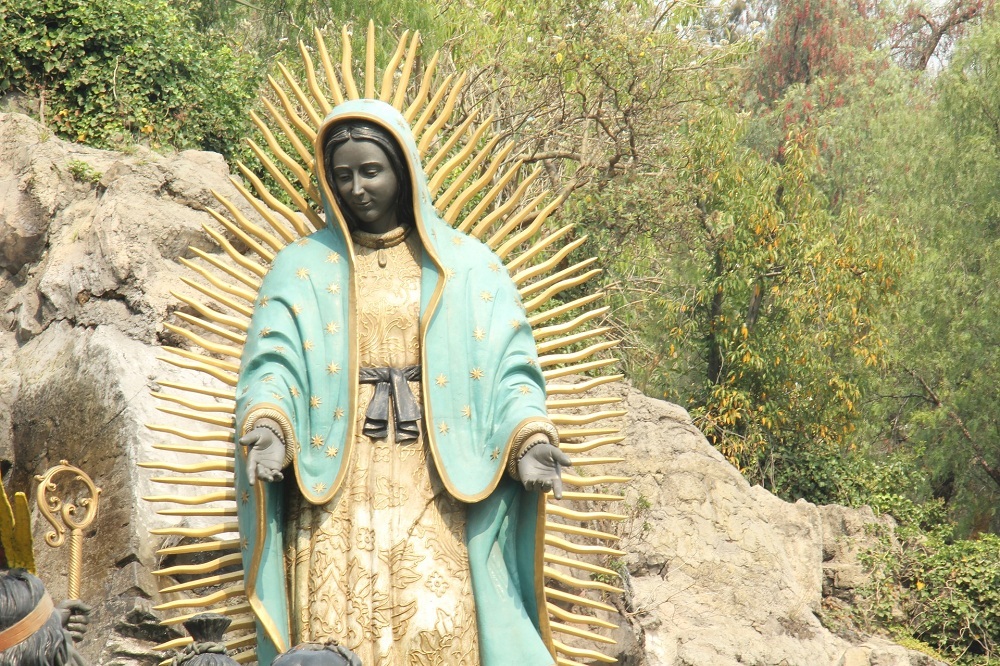
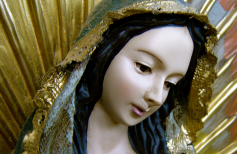
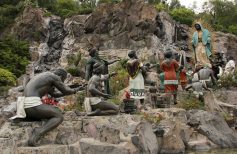
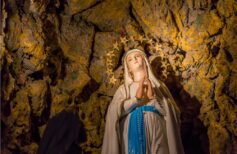
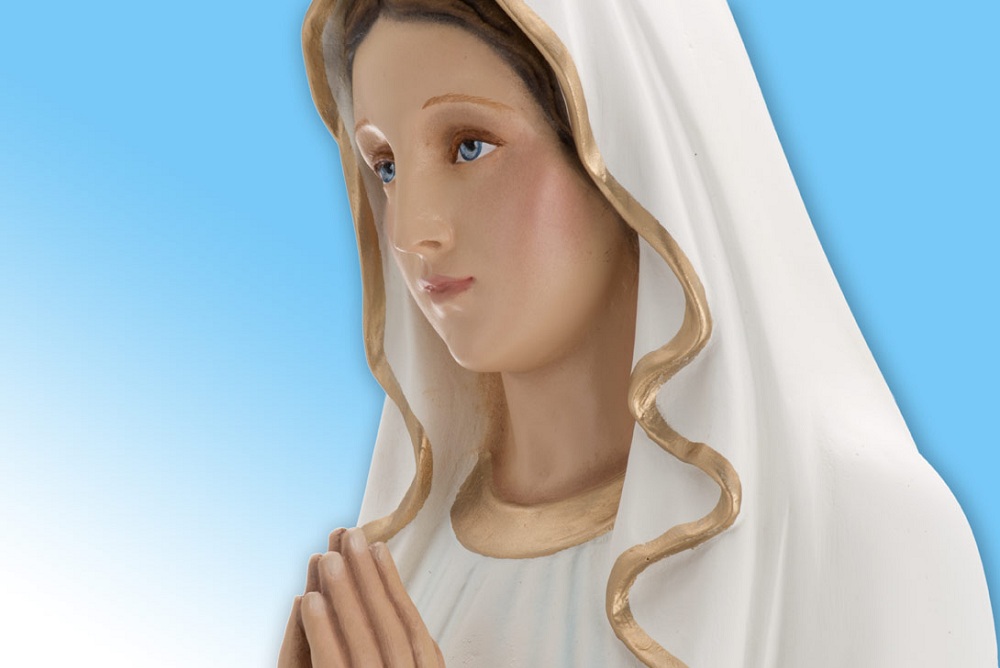
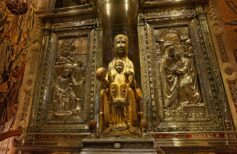
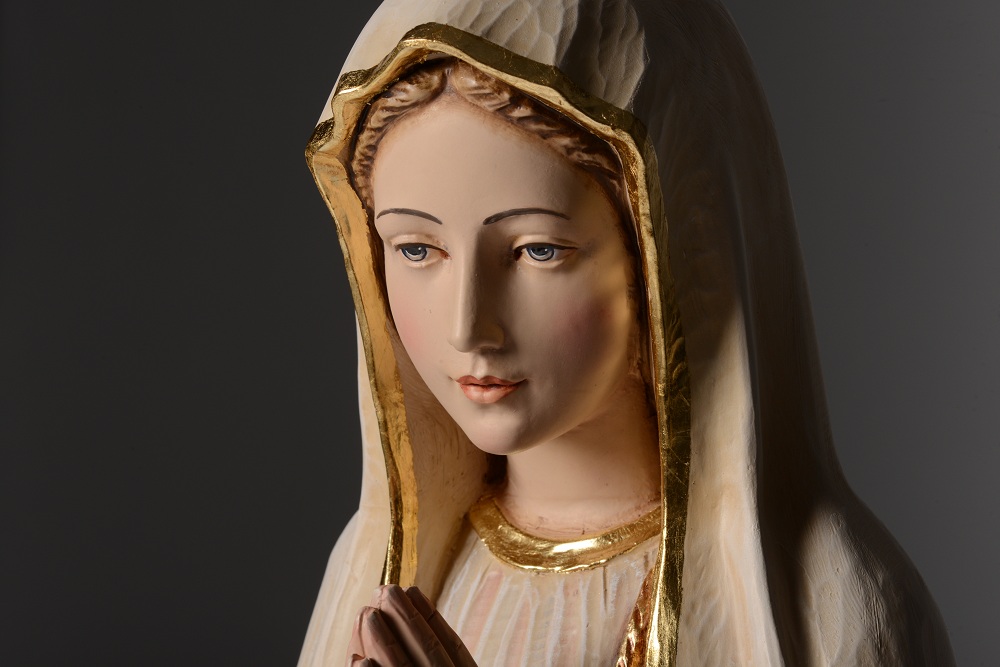
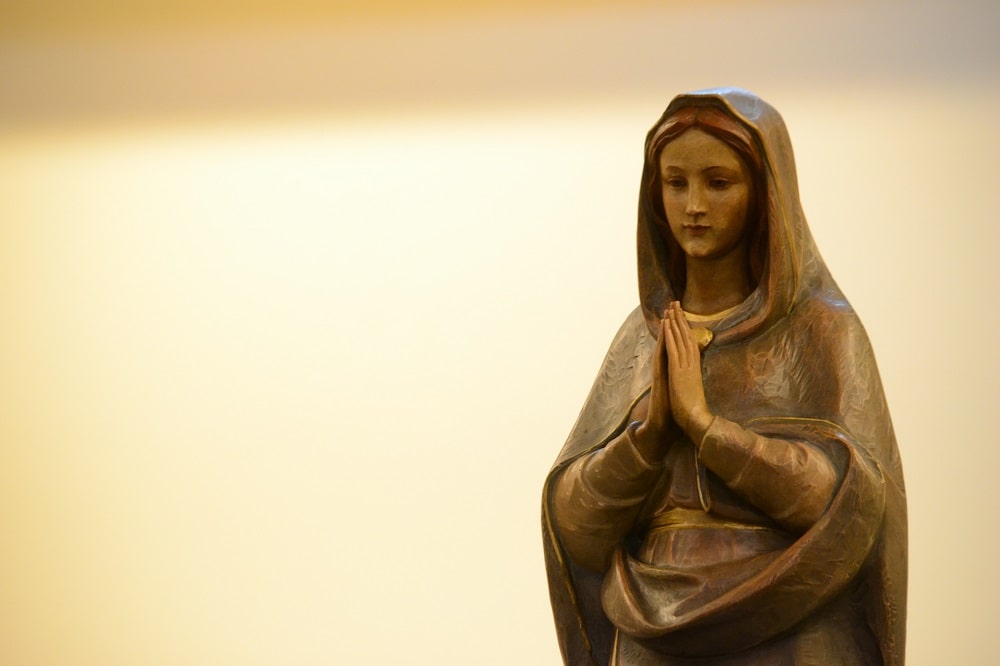
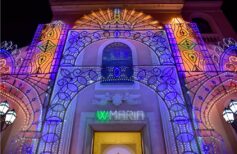
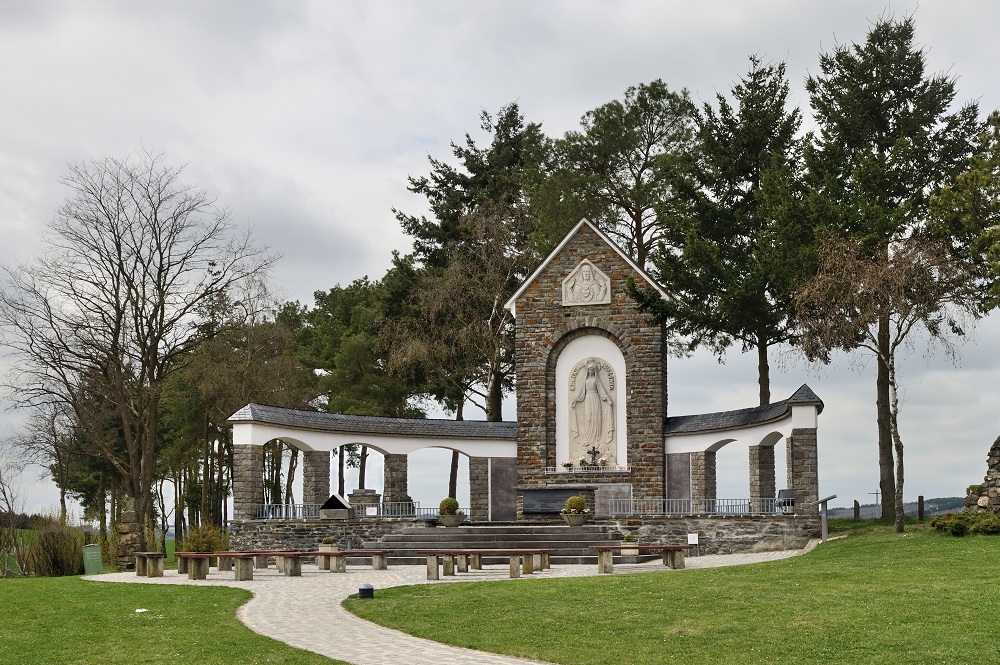








 5 June 2024
5 June 2024
